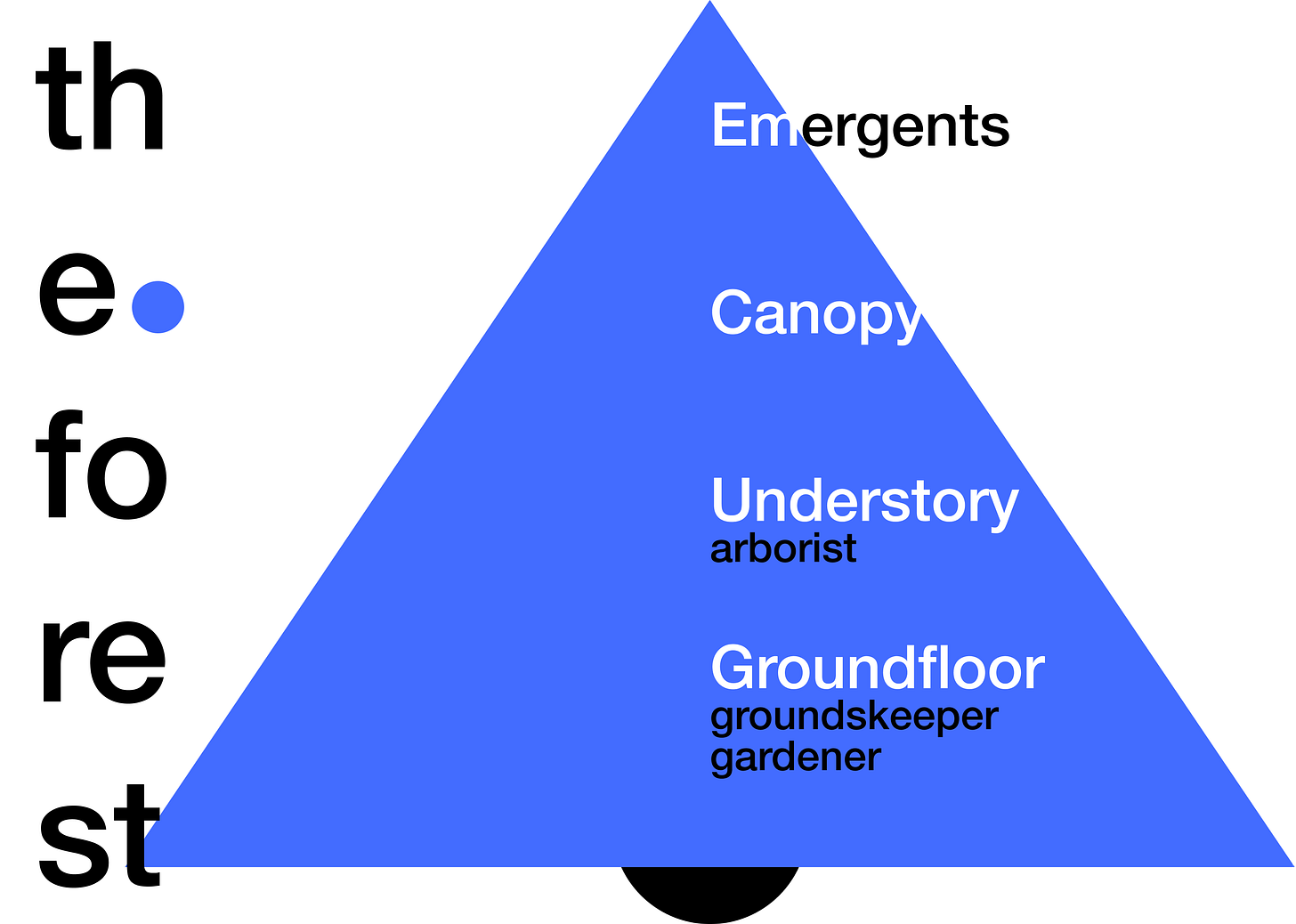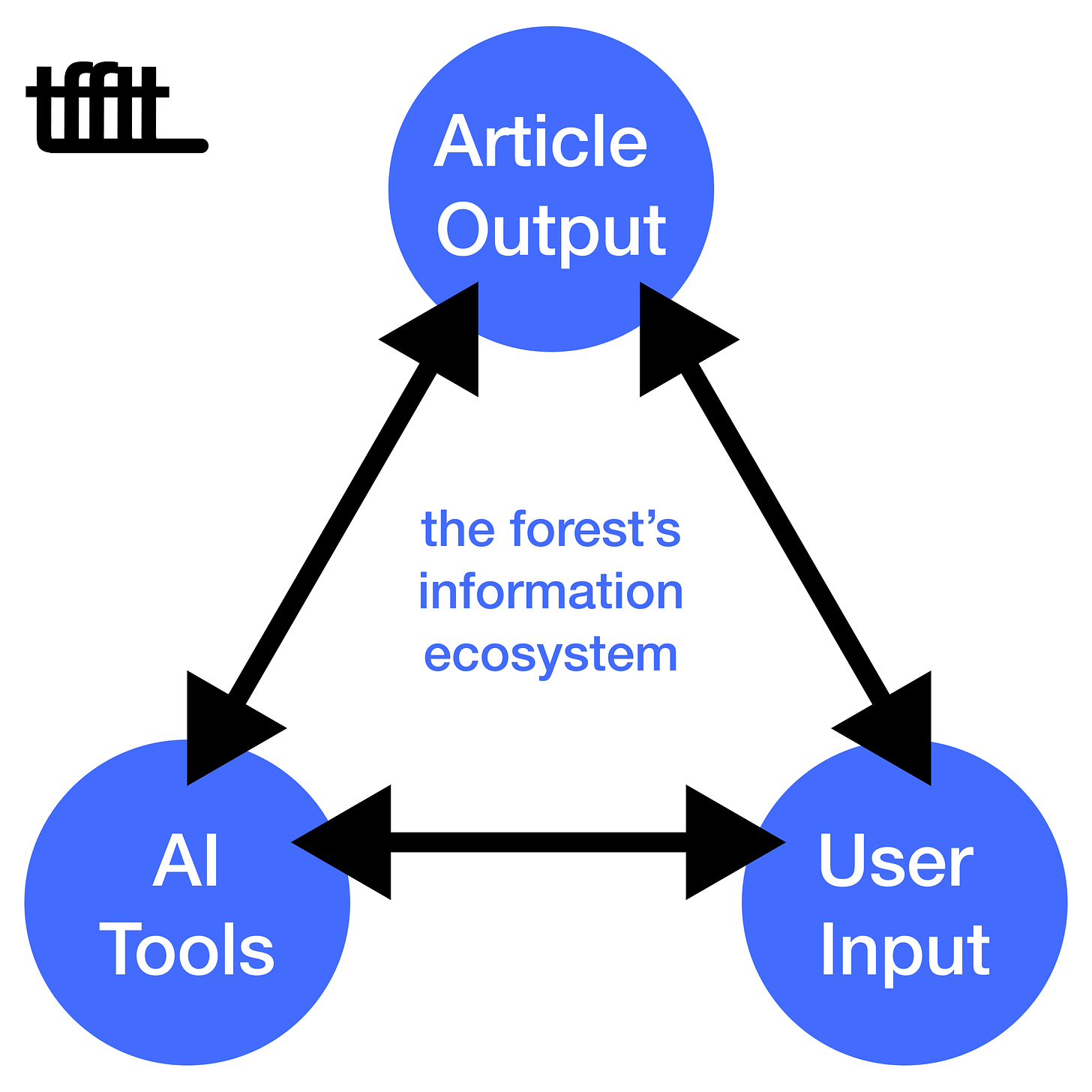Here's why I'm coding AI tools for The Forest's Substack subscribers.
I spent a month coding AI tools for paid subscribers because I want The Forest to become an information ecosystem for music, business, technology, and more.
Thank you for your support! I’ll try to keep this short.
In place of an analytical article this week, I wanted to provide a little update about where The Forest is headed and what you should expect as a subscriber. First off, as a free subscriber you’ll always get access to my weekly (or semi-weekly) analyses, the podcast (once I find the time to launch it), public playlists, and any videos I post on social media.
If you’re content with that content, then great! There’s absolutely no pressure to upgrade or continue reading about how I’m incorporating AI into The Forest. But if you are still curious about what $5 a month, $30 a year, or $100 for a lifetime means….
Emergents Dispatch: weekly data-driven music discovery reports and private Spotify playlists
Canopy Review: a monthly look at the metrics and strategies of successful tracks and albums
AI Tools: an exclusive website that leverages AI to help you get accurate insights quickly
Let’s say you want to know what artists are trending this week without going back through the latest Emergents Dispatch or listening to every track on The Forest’s Spotify playlists. Or maybe you want to do some data analysis without poring over a spreadsheet. That’s where The Forest’s AI-powered information ecosystem comes into play.
The Forest as an Information Ecosystem
For the last month, I’ve been coding AI tools in part because I believe the real value of AI, especially Large Language Models (LLMs), lies in opening up highly specialized hubs of information to everyone. Toward that end, here are the values and thought processes that germinated my own AI tools and the larger mission of The Forest.
Content is not king; content is democratic.
Information should be clear, useful, and actionable.
Good information should be readily accessible.
Everyone absorbs information differently—some people prefer (or have the leisure) to read a 1,000-word essay every week, some might learn better through audio or video, and others might just want to ask a question and get an answer.
Chances are we’re all absorbing information through a combination of those methods, which is why it’s so easy to get conflicting, biased, misleading, or outright false information. Most of us probably don’t have the time to really dig in to the nuances or validity of the information we’re absorbing either, so that creates really fertile soil for the propagation of bad ideas—and that ultimately leads to bad decisions, whether in music, business, politics, or everyday life.
My mission with The Forest is to create an information ecosystem that helps save you time, money, and resources by retrieving accurate and actionable answers for you instantly. I know I won’t accomplish that mission overnight, but sharing the first iteration of these tools with you is just one step in that direction. With all that said, here are the components of The Forest, along with its current inhabitants, tools, and/or use cases.
Groundfloor: The Forest’s foundational knowledge base
Groundskeeper: an AI assistant trained on information from articles published on The Forest
Gardener: an AI industry analyst trained on information that may exist beyond The Forest
Understory: tools that help you analyze your own information
Arborist: a CSV analysis tool that allows you to upload your own CSV and ask questions about the data contained within
Canopy: coming soon
Emergents: coming soon
If that all sounds too abstract, hopefully this helps concretize it a bit more….
Articles or insights The Forest publishes (soil) are handed over to the Groundskeeper for training (cultivation).
Questions users ask (irrigation) any level of The Forest help generate new articles and insights for training the Groundskeeper and fine-tuning the Gardener.
The more content produced by The Forest, the more fertile the soil becomes for the Groundfloor. That ultimately helps the whole ecosystem grow.
I started The Forest not only to help readers see the forest for the trees but also because The Forest is for industry and artistry. Today, much of The Forest exists as a collection of seedlings, but the more cultivation and irrigation that occurs, the lusher and more mature The Forest will become.
How to Interact With The Forest’s AI Tools
In a future post, I’ll explain exactly how I coded an app, from back-end to front-end, in only a month (even though I am not a full-stack developer). For now, please be exceptionally patient with speed, updates, design, and tool functionality, because this is very much a work-in-progress and I’m developing everything myself. I do want to get your feedback about what works, what doesn’t, and what would help you most in a day-to-day capacity, so you can either email me at tfftt@substack.com or just ask the Groundfloor a question.
As far as privacy is concerned, The Forest doesn’t have access to any of your personal information besides your email address, because payments and passwords are handled through Substack. The Groundfloor records your searches for training, fine-tuning, and content generation purposes. The Understory records the file path of uploaded CSVs, but no data is actually accessible to anyone but you. In effect, even if the AI tools don’t have the information you’re looking for right now, your queries will help fertilize The Forest soil for future responses.
For instance, I’ve just trained the Groundskeeper on this article, so it now knows what The Forest is. The Gardener will not yet know what The Forest is, but it will know more general information like when a popular artist’s first album was released. And if you are analyzing a CSV, I recommend being as specific as possible with column names.
If these tools are not useful to you yet, that’s okay, I’ll keep working to improve their functionality, so keep checking back! Only paid subscribers will see the button and code necessary to access the AI tools at the bottom of this post, and if you are not yet a subscriber, you can subscribe below. Thank you for being an early companion on this journey; I really appreciate your support no matter what aspect of The Forest you find most useful.
Information is abundant, and time is not—but that doesn’t mean we should only see the trees. The proliferation of information should help us see the forest.
Keep reading with a 7-day free trial
Subscribe to the forest to keep reading this post and get 7 days of free access to the full post archives.



